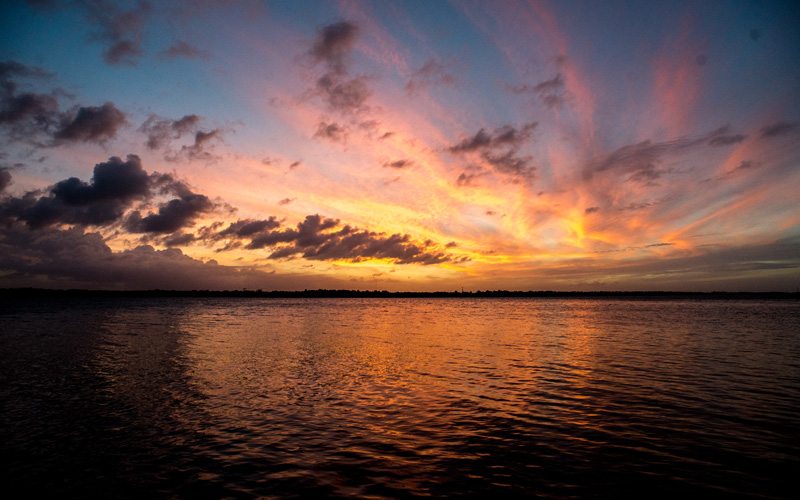Accomplishing the Indian River Lagoon Council’s ten-year conservation and management plan for cleaning up and restoring the ailing 156-mile-long waterway is at very high risk from the effects of climate change– including increased rainfall, intensifying storms, and sea level rise– unless local residents and governments implement strategies to counter those threats.
That is what Dr. Randall Parkinson–a Melbourne climate change scientist who was hired by the council to evaluate the risks to implementation of the comprehensive plan– told the Clean Water Coalition of Indian River County at a meeting [Feb. 20] in Vero Beach.
Parkinson– an adjunct faculty member at Florida International University in Miami and University of Central Florida in Orlando– said he identified 472 risks to the lagoon plan’s mission stemming from climate change– with 370 of those ranked at the highest threat level.
“Fifty percent of risks to the lagoon are from water quality,” Parkinson said. “That is where we need to focus. This is where the action is.”
Parkinson explained that higher rainfall, more intense storms and sea level rise impact ground and surface water quality in a variety of ways: overwhelming and damaging wastewater and stormwater treatment, storage, and conveyance systems and leading to pollutant leaks, saltwater intrusion into the drinking water supply, erosion and other system failures.
The scientist said residents who live along the lagoon should urge their local governments to develop action plans to combat these threats by conducting a comprehensive inventory of water infrastructure and evaluating the systems’ integrity and vulnerabilities.
“Prioritize,” Parkinson said. “Which ones are the oldest, highest-risk, cheapest to replace? Let’s start there. Then prepare a climate change assessment. Most counties don’t know where these pipes and other infrastructure are. Everything is going to take money.”
He suggested lagoon communities re-think policies of reusing partially-treated wastewater for irrigation as they have already done with biosolids–imposing moratoriums on using partially-treated human waste as fertilizer. Sewage treatment fails to remove some pollutants such as metals, pharmaceuticals, and herbicides.
“We need public support to drive things in the right direction,” Parkinson said.

